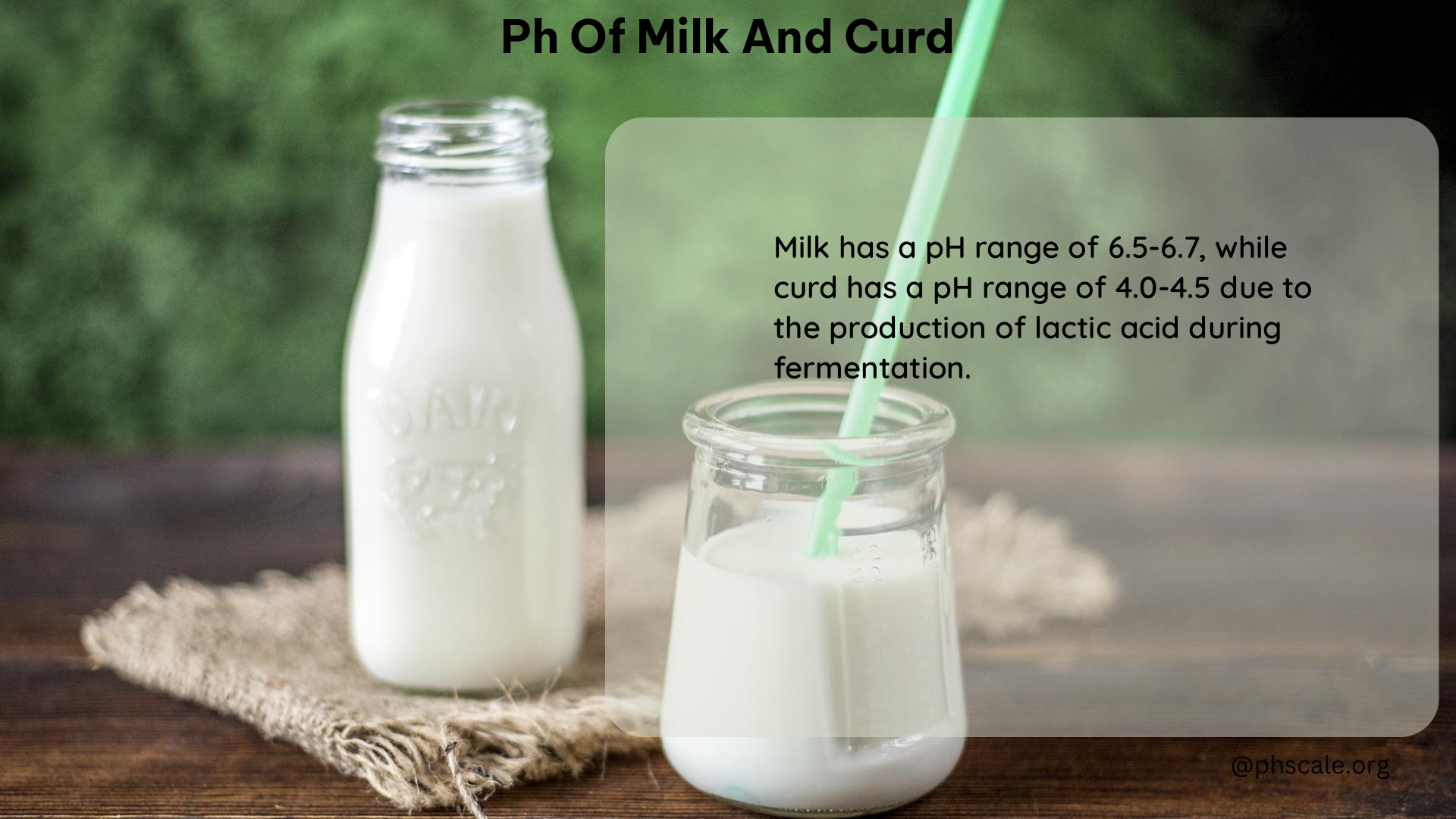The pH of milk is a crucial factor that determines its quality, taste, and overall health benefits. As milk transforms into curd, the pH level undergoes a significant change, affecting the final product’s characteristics. In this comprehensive blog post, we will delve into the intricacies of the pH of milk and curd, exploring the reasons behind the acidity transformation and its implications.
The pH of Milk
Milk, a complex and nutritious liquid, has a slightly acidic pH of around 6. This pH level is maintained by the presence of various compounds, including casein proteins, phosphates, and citrates, which act as natural buffers. The slightly acidic nature of milk helps to preserve its freshness and prevent the growth of harmful bacteria.
The Transformation into Curd

When milk is fermented, the pH level undergoes a noticeable change. During the fermentation process, lactic acid bacteria, such as Lactobacillus acidophilus and Lactococcus lactis, convert the lactose (milk sugar) into lactic acid. This conversion results in a decrease in the pH level, making the curd more acidic, with a range of 4.5 to 5.5.
The Fermentation Process
The fermentation process is a crucial step in the transformation of milk into curd. The lactic acid bacteria present in the milk consume the lactose and convert it into lactic acid. This process not only decreases the pH level but also imparts a tangy and slightly sour flavor to the curd.
The Role of Lactic Acid Bacteria
Lactic acid bacteria play a vital role in the fermentation of milk and the subsequent formation of curd. These bacteria are responsible for the production of lactic acid, which is the primary driver of the pH change. As the lactic acid accumulates, the pH level of the curd decreases, making it more acidic.
Factors Affecting the pH of Curd
Several factors can influence the pH of curd, including the initial pH of the milk, the type and amount of lactic acid bacteria present, the fermentation time, and the storage conditions.
Initial pH of Milk
The pH of the milk used to make curd can affect the final pH of the curd. If the milk has a higher initial pH, the curd may have a higher pH as well, and vice versa.
Lactic Acid Bacteria Strain
Different strains of lactic acid bacteria can produce varying amounts of lactic acid, leading to differences in the pH of the final curd product.
Fermentation Time
The duration of the fermentation process can also impact the pH of the curd. Longer fermentation times generally result in a lower pH, as more lactic acid is produced.
Storage Conditions
The storage temperature and duration can also influence the pH of the curd. Improper storage conditions can lead to further fermentation and a decrease in pH.
Importance of pH in Milk and Curd
The pH of milk and curd is not just a technical detail; it has significant implications for the quality, taste, and health benefits of these dairy products.
Milk Quality and Shelf Life
The pH of milk is a crucial indicator of its freshness and quality. A pH level that deviates significantly from the normal range can be a sign of spoilage or contamination, affecting the milk’s shelf life and safety.
Curd Texture and Flavor
The pH of curd directly influences its texture and flavor. A lower pH, resulting from increased lactic acid production, can lead to a firmer, more tangy, and sour-tasting curd.
Nutritional Value
The pH of milk and curd can also impact their nutritional value. Certain nutrients, such as calcium and phosphorus, are more readily available at specific pH levels, affecting their absorption and utilization by the body.
Gut Health
Curd, especially when made with live cultures, can be a valuable source of probiotics. The pH of the curd can affect the viability and effectiveness of these beneficial bacteria, which play a crucial role in maintaining a healthy gut microbiome.
Balancing the pH of Milk and Curd
Maintaining a healthy pH balance in milk and curd is essential for ensuring their quality, taste, and health benefits. Here are some tips to help you achieve this:
-
Consume Milk and Curd in Moderation: As part of a balanced diet, it’s important to consume milk and curd in moderation to avoid any imbalances in your body’s pH levels.
-
Opt for Natural Fermentation: When making curd at home, choose natural fermentation methods that rely on the natural lactic acid bacteria present in the milk, rather than using artificial additives.
-
Prefer Probiotic-Rich Curd: Look for curd that contains live cultures, as these probiotics can help support a healthy gut microbiome and maintain a balanced pH.
-
Monitor Storage Conditions: Ensure that milk and curd are stored at the appropriate temperature and for the recommended duration to prevent further pH changes.
By understanding the pH of milk and curd, and taking steps to maintain a healthy balance, you can enjoy these dairy products while reaping their full nutritional and health benefits.
References:
- https://www.quora.com/Fresh-milk-has-a-pH-of-6-Why-does-the-pH-change-as-it-turns-into-curd
- https://www.sciencedirect.com/science/article/pii/S0022030241954693/pdf?md5=df49b1bb010214fd50f01df394365862&pid=1-s2.0-S0022030241954693-main.pdf
- https://www.vedantu.com/question-answer/fresh-milk-has-a-ph-of-6-on-changing-into-curd-class-10-chemistry-cbse-5f43db3bce20ca61edbfaf52.
